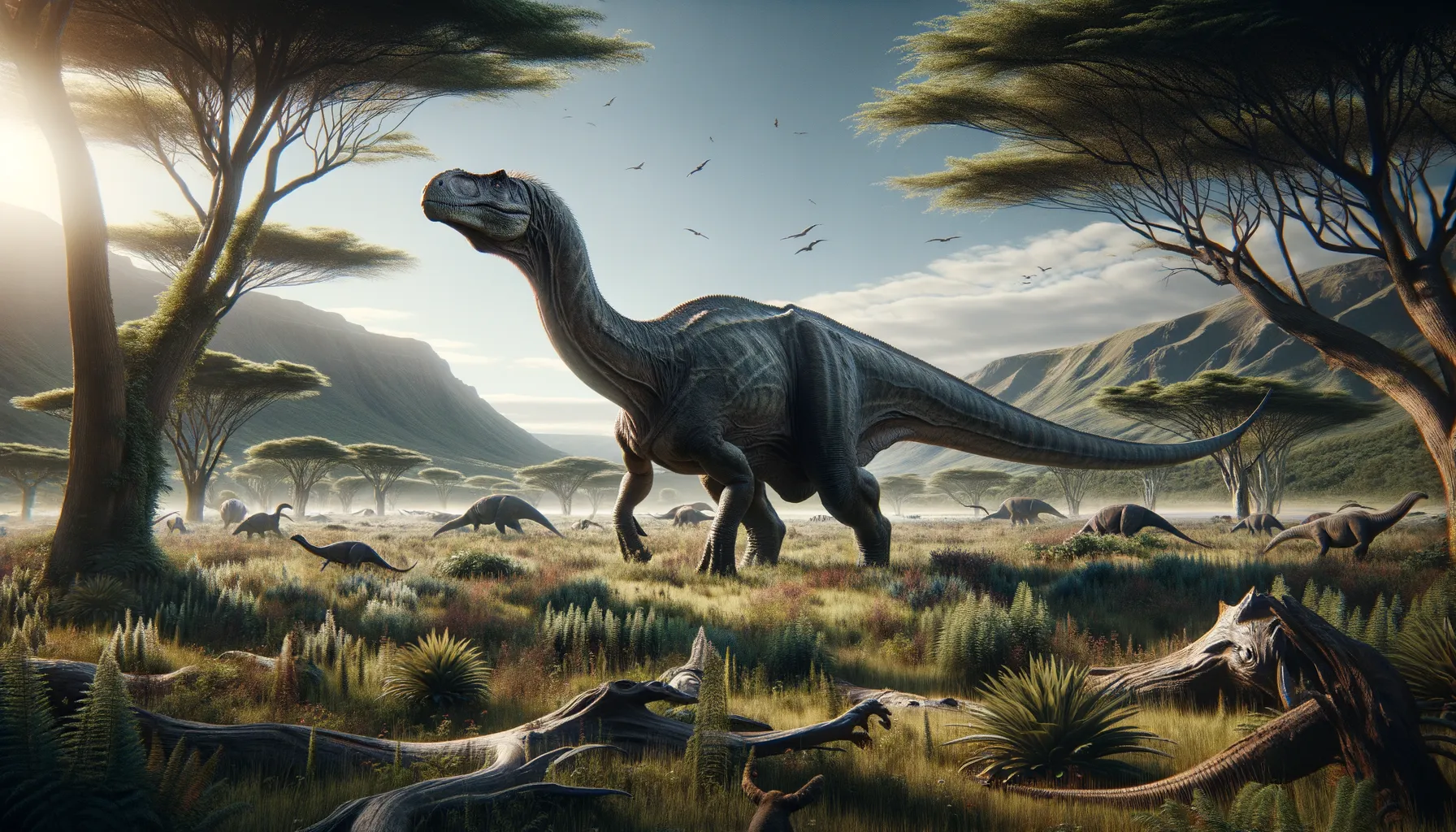
Jaklapallisaurus
A gentle giant of the Jurassic era.
Period
Jurassic
Length
About 10 meters long.
Height
Around 3 meters tall.
Weight
Approximately 1.5 tons.
Jaklapallisaurus was a herbivorous dinosaur that roamed the land during the Late Jurassic period. With its massive body and long neck, this dinosaur was likely a browser, feeding on high vegetation. As part of the sauropod group, it moved in herds, offering protection and social interaction. Its discovery in India shed light on the diversity of sauropods across ancient landmasses.
Diet
Jaklapallisaurus was a herbivore, feeding primarily on shrubs, leaves, and possibly low-lying trees. Its long neck allowed it to reach vegetation that was not accessible to other herbivores.
Hunting
As a herbivore, Jaklapallisaurus did not exhibit hunting behaviors, instead spending much of its day grazing for food. Its size and group living offered protection from predators.
Environmental challenges
The changing climate during the Jurassic period would have posed challenges in finding sufficient food and water. Seasonal variations might have led this dinosaur to migrate in search of resources. Predation by large theropods would have been a constant threat, although its size and group living offered some protection.
Speed
Moderate, likely due to its size.
Lifespan
Estimated to be several decades.
First discovery
Discovered in India in the early 2000s.
Fun Facts
- Jaklapallisaurus is a dinosaur that lived during the Late Triassic period, around 216 million years ago.
- It was a herbivorous dinosaur, meaning it primarily ate plants.
- Fossils of Jaklapallisaurus were discovered in what is now India, specifically in the state of Andhra Pradesh.
- This dinosaur is part of the group known as sauropodomorphs, which are early relatives of the giant, long-necked dinosaurs like Brachiosaurus.
- Jaklapallisaurus had a relatively small body compared to later sauropods, suggesting it was an early evolutionary stage in this group.
- The name Jaklapallisaurus is derived from Jaklapalli, the village near where its fossils were found.
- Jaklapallisaurus is important to scientists because it helps us understand the early evolution of long-necked dinosaurs.
Growth and Development
Jaklapallisaurus hatched from eggs and grew rapidly to reach its massive adult size. Like other sauropods, it likely went through distinct growth phases, aided by abundant food sources. Its long neck and tail characteristic developed as it aged, allowing better access to food.
Habitat
This dinosaur lived in a semi-arid environment with savannah-like conditions. It preferred areas densely populated with plant life, such as ferns and low trees. Water sources were crucial for its survival, influencing its habitat preferences and migrations.
Interaction with other species
Jaklapallisaurus likely lived alongside other dinosaur species, both herbivores and carnivores. Its interaction with herbivorous peers included shared grazing areas, while encounters with predators were likely defensive. Mutualism with smaller animals, such as birds feeding on parasites, might also have occurred.
Natural lifespan
Its natural lifespan could reach up to 50-70 years.
Reproduction
This dinosaur reproduced by laying eggs in nests, possibly in communal nesting grounds. Females might have laid numerous eggs at once, increasing the chance of survival for some offspring. After hatching, the young were likely independent, despite some possible parental protection.
Social behaviour
Jaklapallisaurus was likely a social animal, moving in groups for protection and social interaction. Herding provided safety in numbers, which was advantageous against predators. Communication within the group might have occurred through vocalizations or physical gestures.
Fossil locations
Fossils of Jaklapallisaurus have been predominantly found in the Pranhita-Godavari basin of India. These locations have provided insights into its size and structure, contributing to understanding its place in the sauropod lineage. The fossil finds have been crucial in exploring the spread of dinosaurs across Gondwana.
